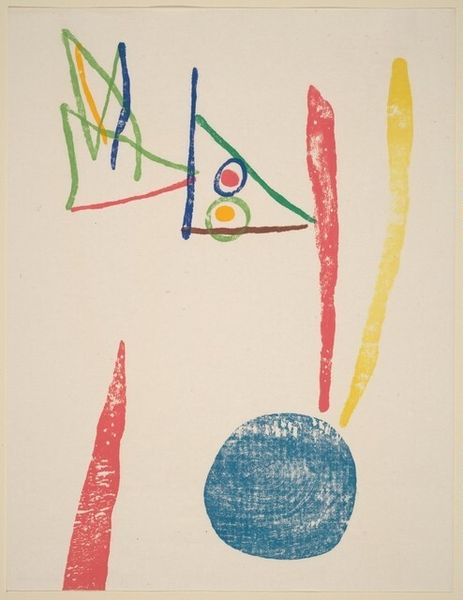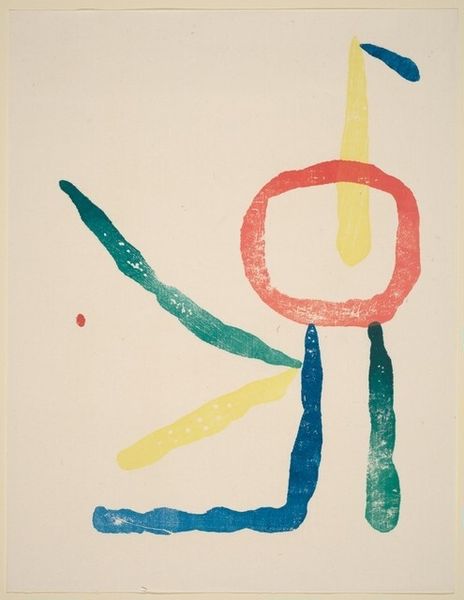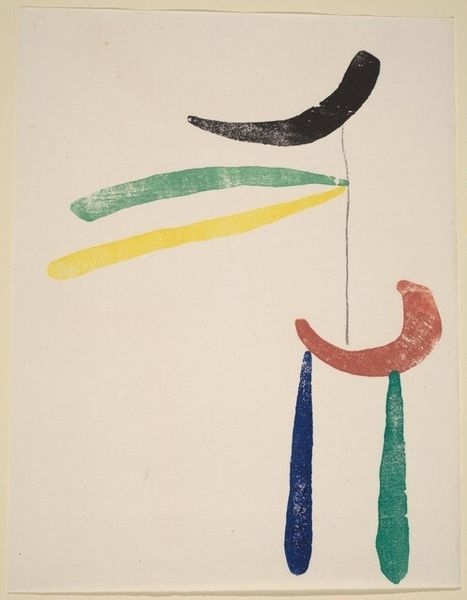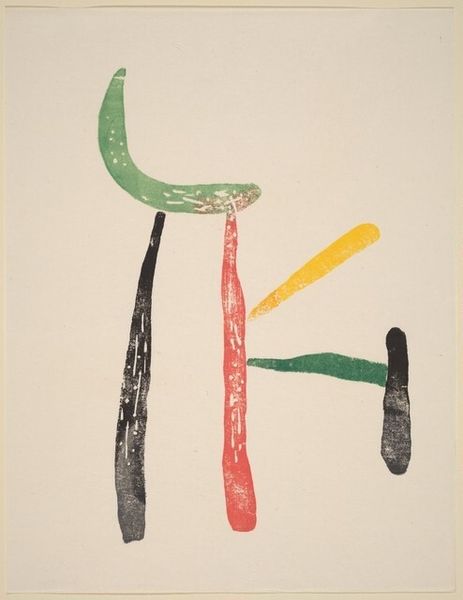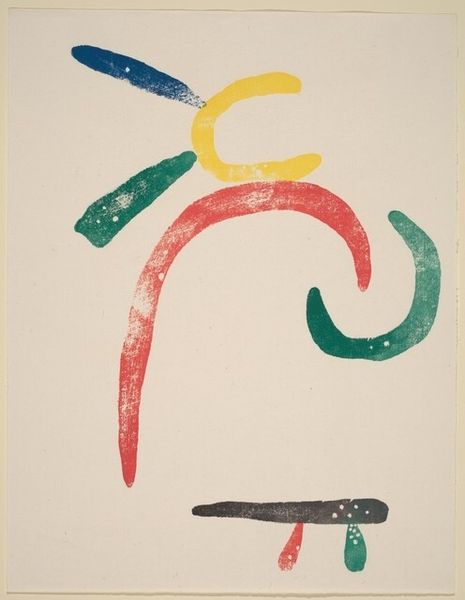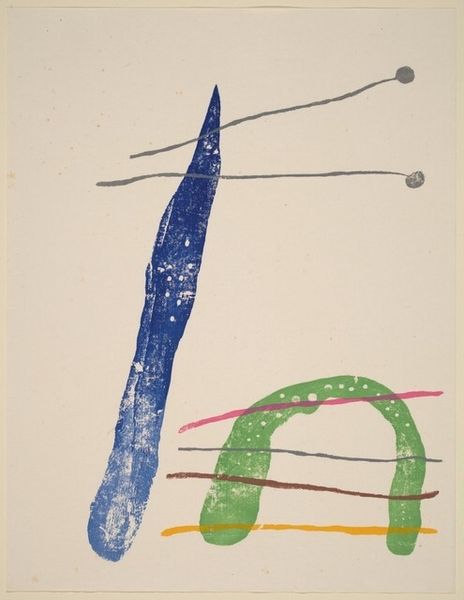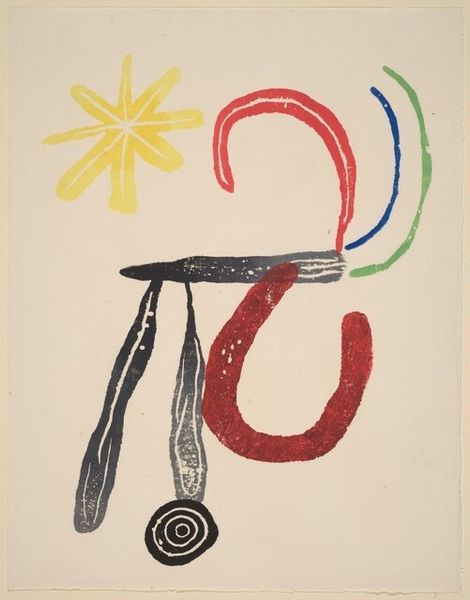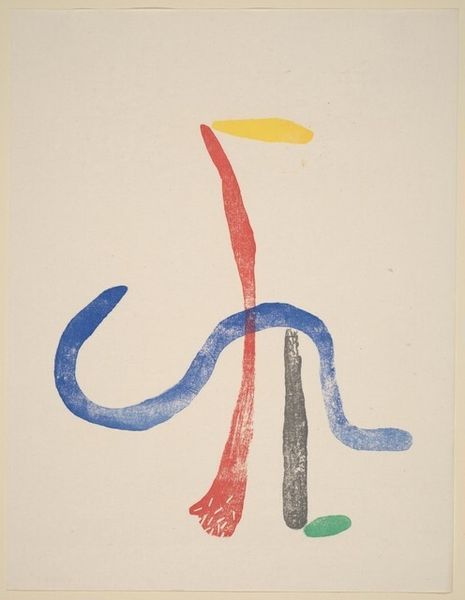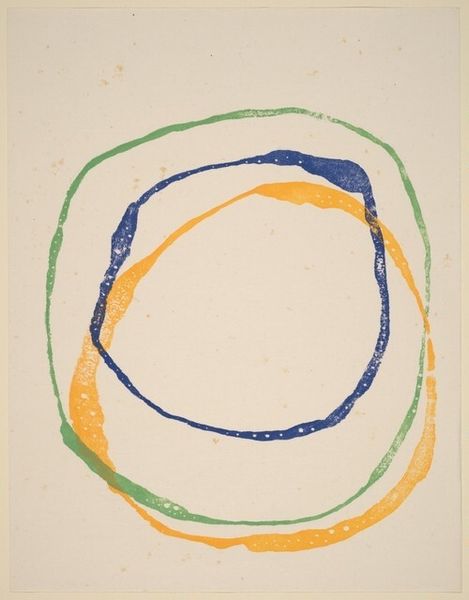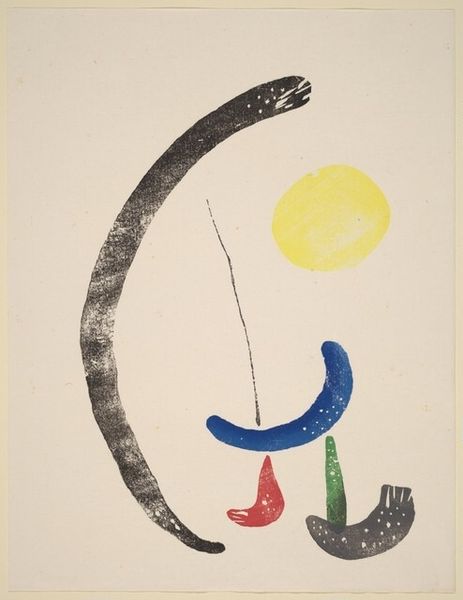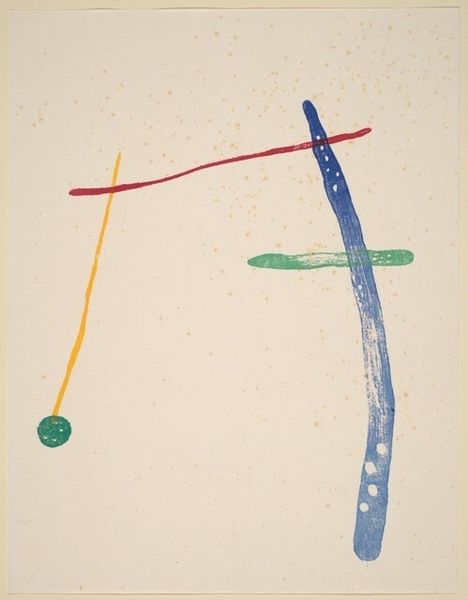![Untitled [plate X] by Joan Miró](/_next/image?url=https%3A%2F%2Fd2w8kbdekdi1gv.cloudfront.net%2FeyJidWNrZXQiOiAiYXJ0ZXJhLWltYWdlcy1idWNrZXQiLCAia2V5IjogImFydHdvcmtzL2VhYjY4MmE1LTczYmYtNDUwNS04YmE1LWZlM2NkMmMzZGIyMS9lYWI2ODJhNS03M2JmLTQ1MDUtOGJhNS1mZTNjZDJjM2RiMjFfZnVsbC5qcGciLCAiZWRpdHMiOiB7InJlc2l6ZSI6IHsid2lkdGgiOiAxOTIwLCAiaGVpZ2h0IjogMTkyMCwgImZpdCI6ICJpbnNpZGUifX19&w=1080&q=75)
#
abstract-expressionism
# print
#
geometric
#
abstraction
#
line
#
modernism
Copyright: National Gallery of Art: CC0 1.0
Editor: This print, "Untitled [plate X]" by Joan Miró, from 1958, is really striking in its simplicity. It has such a playful vibe, with these bold, almost childlike shapes and colours. What visual connections do you see in this piece? Curator: The apparent simplicity is deceptive. Miró draws upon a deep well of symbolic language, and his biomorphic forms resonate with cultural memory. Note the colours; primary, yes, but they are loaded. What might those choices suggest to you in a postwar context, reflecting anxieties and hopes? Editor: Well, the red, blue, and yellow are pretty basic. Maybe a sense of starting over, a return to fundamentals? It’s almost…optimistic, despite being abstract. Curator: Exactly. The rudimentary forms, seemingly spontaneous, are meticulously planned. The grey arc at the top echoes ancient arches, gateways, even a halo. And the circles – what do circles evoke across cultures? Editor: Hmmm... wholeness? The sun? The eye? The circle is yellow and green! A vibrant, earthly centre! Curator: Consider Miró's Catalan heritage. These shapes echo the landscape, the sun, the sea. The "mistakes," the textures—intentional disruptions challenging conventional beauty. Miró asks us to reconsider the symbolic weight carried in these archetypal images. Editor: I see. It's not just a fun arrangement of shapes, it’s more about unlocking something deeper through simple forms. Almost like a modern-day cave painting. Curator: Precisely. The piece encourages us to connect to a visual history that we often take for granted. Editor: I hadn't thought about it that way at all. Looking at it now, I see how each element carries its own kind of… resonance. Thank you!
Comments
No comments
Be the first to comment and join the conversation on the ultimate creative platform.
